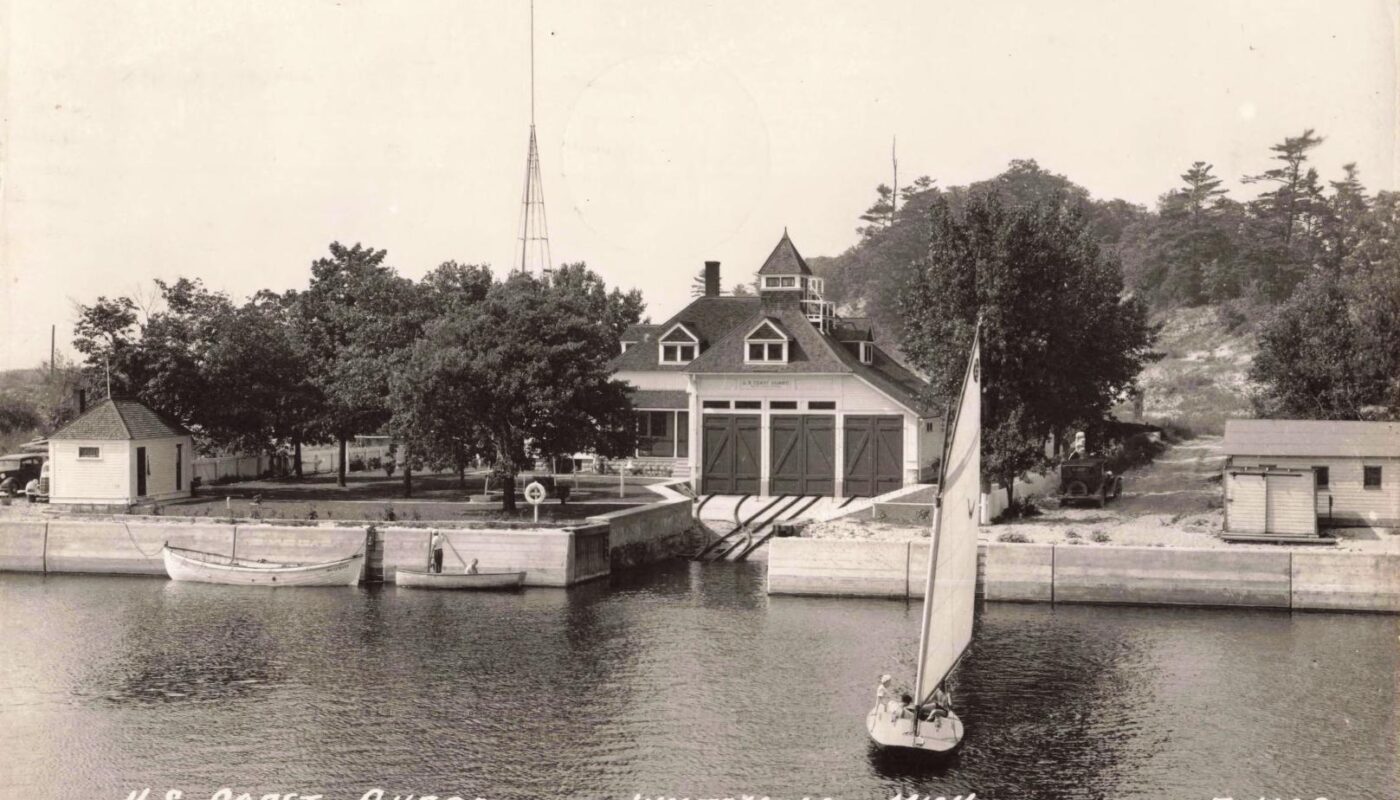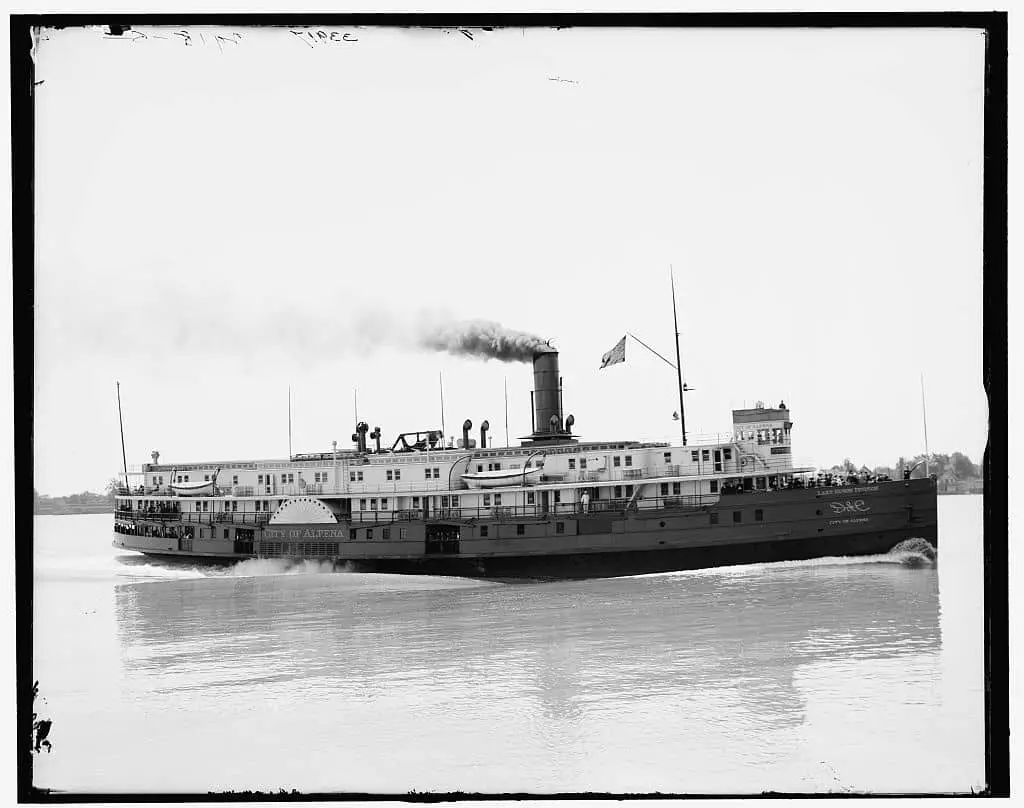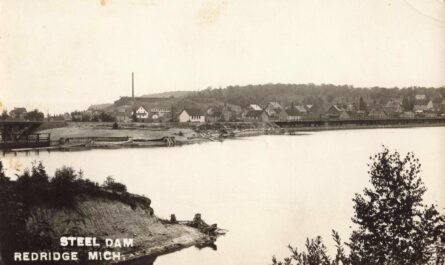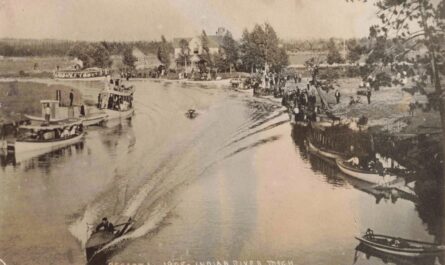Whitehall faces a sheltered lake that opens to Lake Michigan through a narrow channel. That geography produced a city. In 1859, lumberman Charles Mears and Giles Slocum platted a settlement at the head of White Lake and named it Mears. By 1862, residents adopted the name Whitehall. The mills stayed busy, and the harbor grew. This is the history of Whitehall Michigan.
Video – Whitehall, Michigan: From Pine and Steamships to Sails and Summer
Whitehall, Michigan grew from a lumber harbor into a summer town where steamships, lifesavers, and regattas shared the same channel. This Michigan Moments episode uses rare photos from 1900–1950 to trace that arc: the 1859 plat by Charles Mears and Giles Slocum; the mills and booming pens on White Lake; the rise of the Eagle-Ottawa tannery; and the Goodrich Line steamers bringing families from Chicago to lakeside resorts and the Mears Hotel. We visit the White River Light Station, first lit in 1875, and the White River Life-Saving Station that later served under the U.S. Coast Guard. We walk Colby Street during the Swedish Festival, stand beside a 1930s lunch car on U.S.-31, and watch sails line up for a White Lake Yacht Club start.
You’ll hear about Murray’s Inn beach tents, White Lake Villa, and golf at the Bendelow-designed White Lake Golf Club. We note Joseph A. Sadony’s Valley of the Pines on the old channel and the blockhouse landmark along the scenic drive. The episode explains how railroads and the electric interurban faded as automobiles and highways took over, yet how the harbor and downtown remained central to everyday life.
This video is a concise guide for anyone researching Whitehall history, White Lake resorts, Michigan steamship travel, Great Lakes lighthouses, the U.S. Life-Saving Service, and early West Michigan industry. It is also a look at how one lakeshore community balanced work and welcome across fifty years.
Summary: Whitehall, Michigan is noteworthy as a harbor city shaped by timber, leather, navigation, and summer culture—held together by a channel that always mattered.
A Harbor Built on Timber
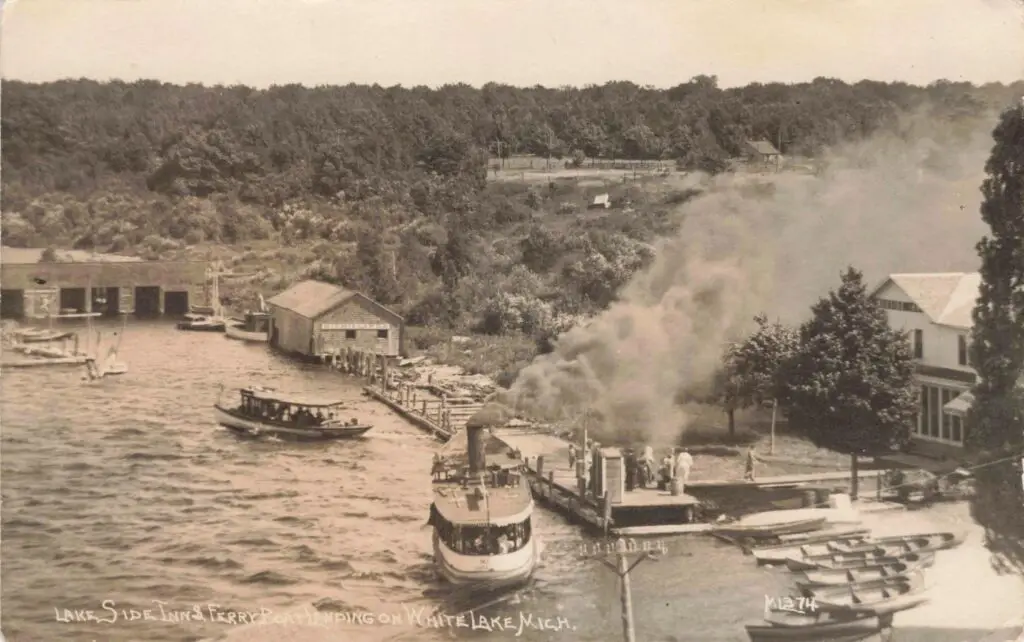
The first period of growth depended on the forests. Logs floated down the White River into booming pens and moved to mills on both shores. Montague rose across the causeway, and the two communities shared a working harbor. Early accounts and historic markers place Charles Mears’s first mill work on White Lake in the 1830s and 1840s, binding local fortunes to the lumber trade
Leather on the River
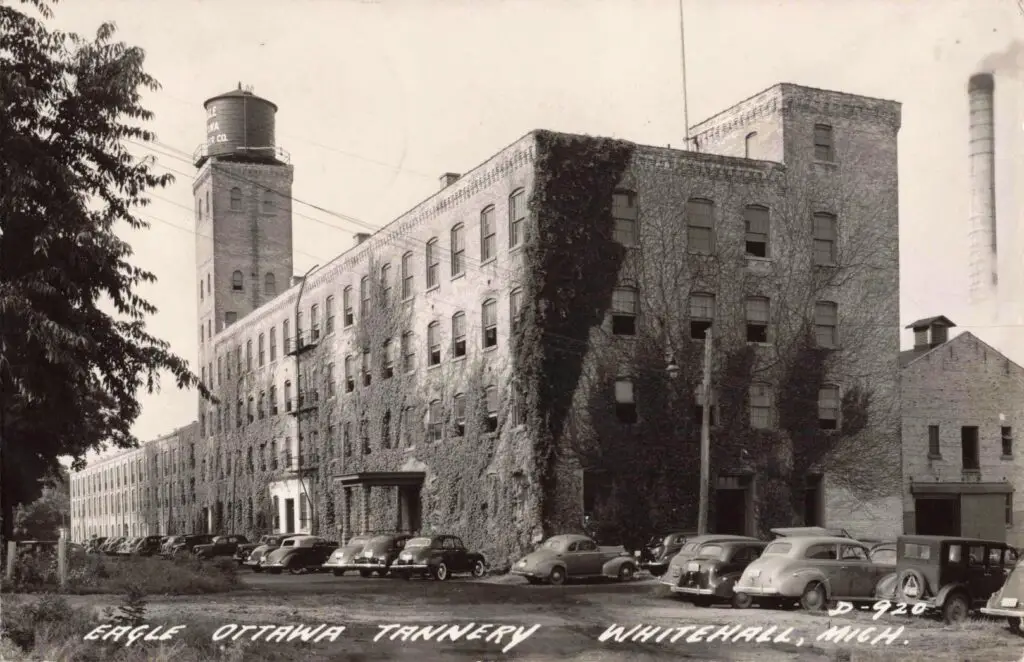
As timber waned, tanning expanded. A tannery opened in 1866 and later became the Eagle-Ottawa Leather Company. The long brick factory visible in many photos anchored jobs and payroll on the channel for decades. Whitehall’s economy diversified but remained tied to water, rails, and a workforce that adapted to new trades.
Steamships, Cottages, and Summer
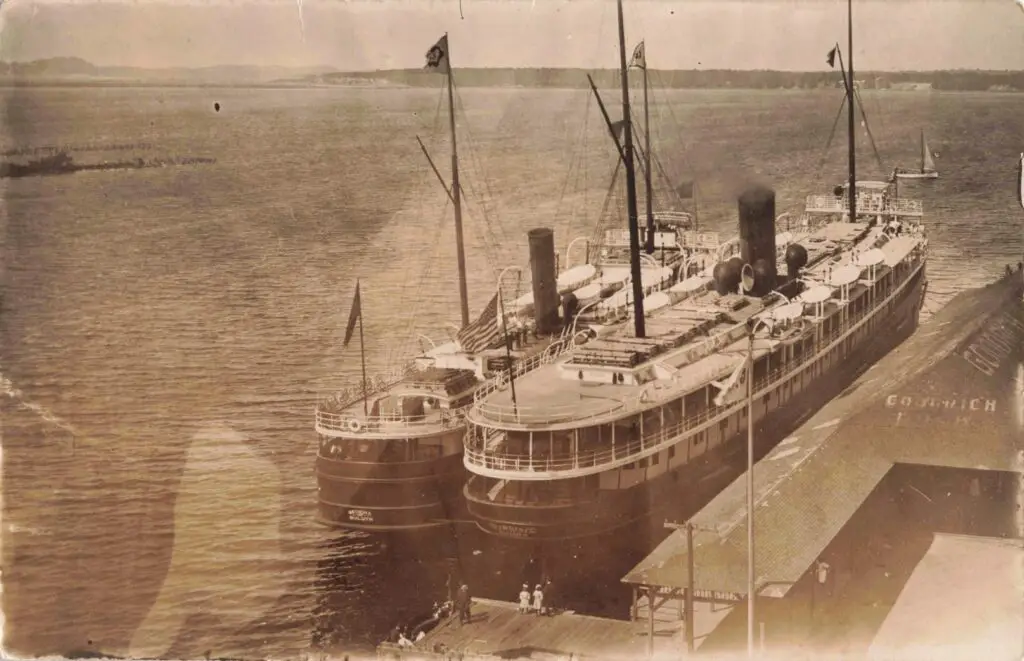
Passenger steamers of the Goodrich Line connected White Lake to Chicago. Timetables and brochures advertised direct trips to “White Lake” through the 1920s, and the docks at Whitehall and Montague bustled with families, camp trunks, and resort launches. Hotels and boarding houses thrived, including the Mears Hotel on Colby Street. Resorts such as Murray’s Inn and White Lake Villa filled porches and beaches in season. Tourism became part of the local economy.
Keeping the Channel Safe
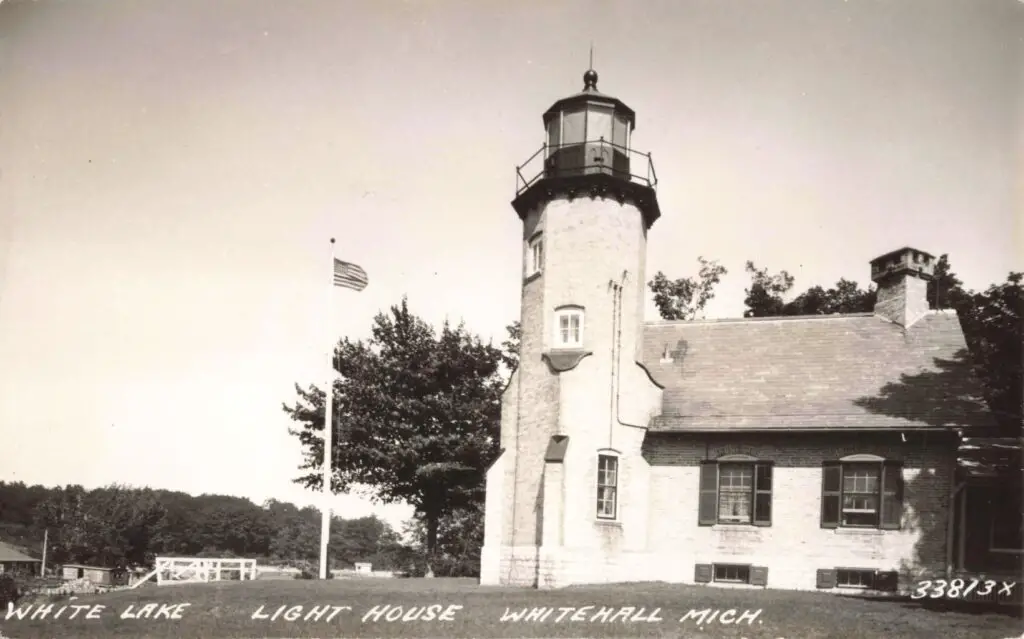
The White River Light Station, established in 1875, guarded the channel. Keeper William Robinson and later keepers climbed the tower’s spiral stairs to watch the entrance from Lake Michigan into White Lake. Nearby, the U.S. Life-Saving Service opened Station White River in the 1880s. Crews drilled, patrolled the beaches, and launched surfboats down an inclined runway. After 1915 the service became the U.S. Coast Guard; the station remained active into the mid-20th century. Today the lighthouse operates as a museum.
Rails, Interurban, and the Rise of U.S.-31
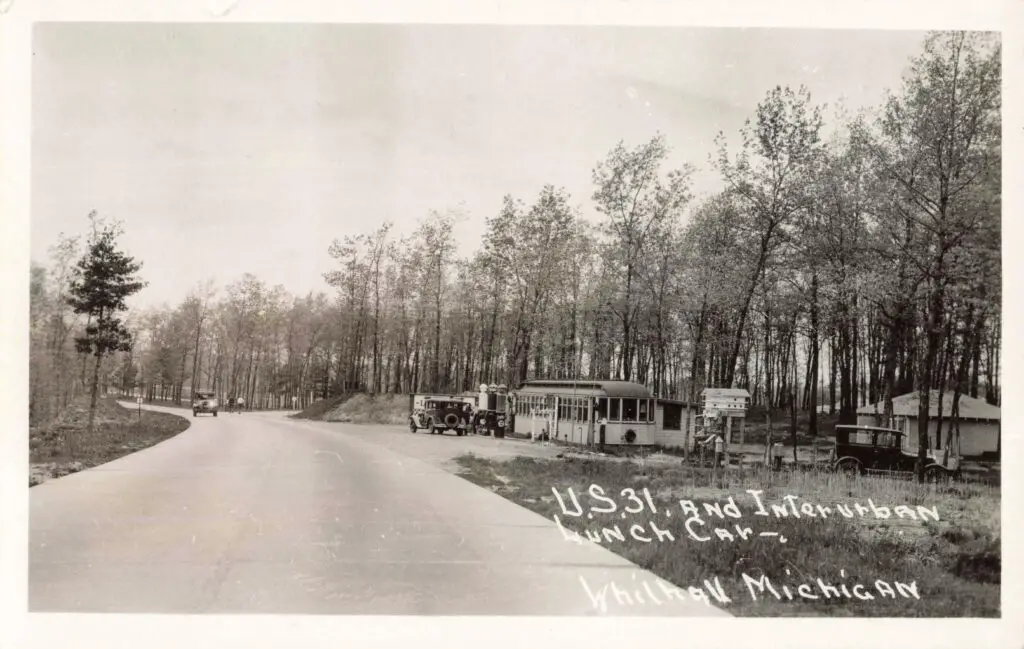
Whitehall’s story also runs on tracks and pavement. Railroads carried freight and passengers early on, then the electric interurban tied West Michigan towns together from the 1900s to the late 1920s. With more paved roads and private cars, U.S.-31 took the lead. Photographs of a roadside “lunch car” near Whitehall show the new era of auto travel replacing interurban service.
Clubs, Courses, and Community Life
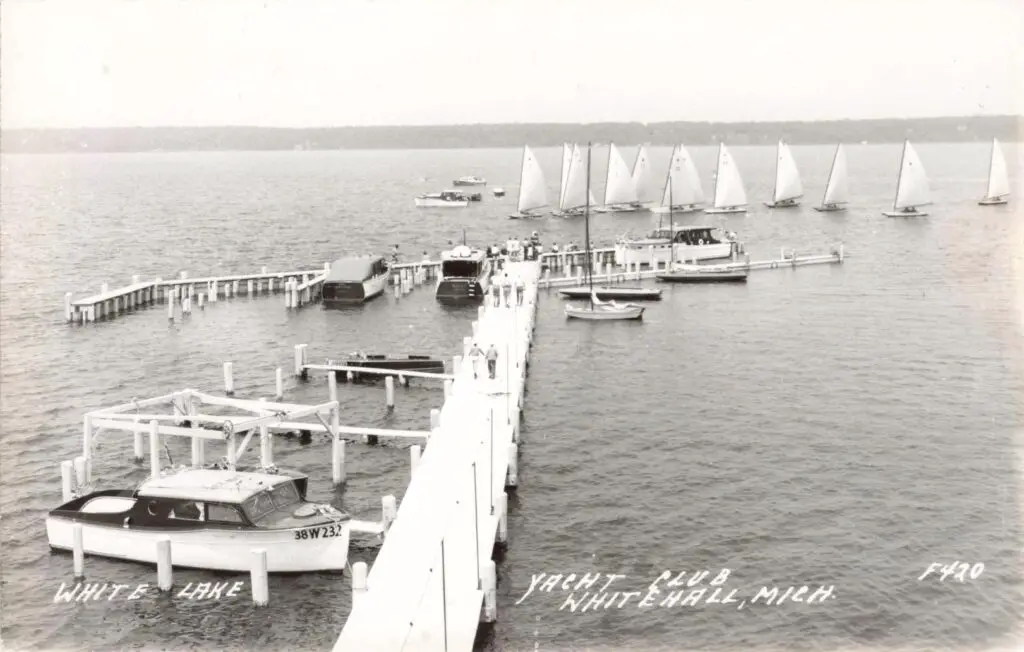
By 1907 the White Lake Yacht Club organized races and social events; soon the lake filled with sails on summer weekends. In 1916, noted architect Tom Bendelow laid out the White Lake Golf Club’s first nine holes, later expanded. Parades down Colby Street marked festivals and busy shopping days, with storefronts—like Gee & Carr Hardware—serving year-round residents and summer crowds alike. The Playhouse at White Lake opened in 1916 and remains a community venue.
Valley of the Pines and the Old Channel
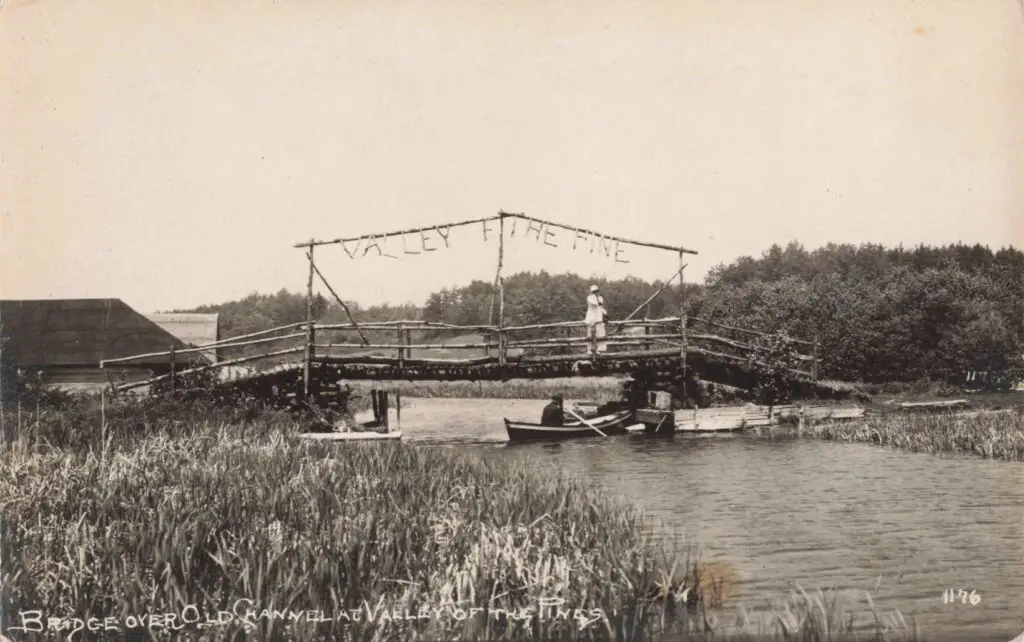
Across the channel, Joseph A. Sadony developed the Valley of the Pines estate along the old channel near White Lake. The site became known for lectures, publishing, and a distinctive rustic bridge—another chapter in the region’s character during the early twentieth century.
Why It Matters
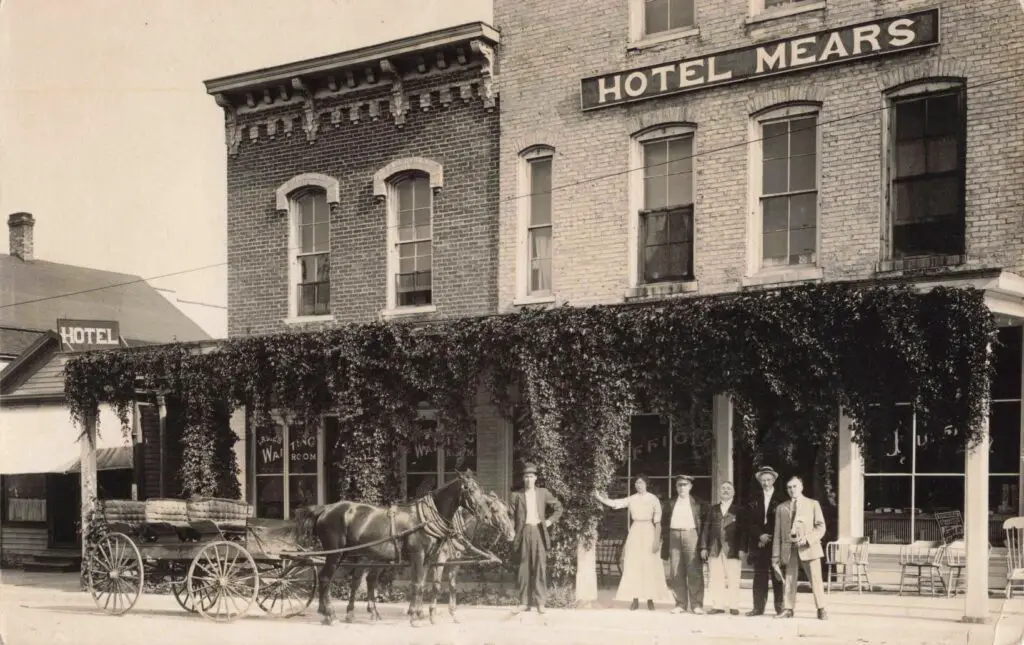
The History of Whitehall Michigan is not only about mills and ships. It is about a harbor town learning to balance industry with hospitality. Leather workers punched the clock while visitors checked in at lakeside inns. Lighthouse keepers tended the lamp while sailors trimmed sails in the afternoon breeze. The History of Whitehall Michigan follows a pattern seen across the lakeshore, but with details only this channel can claim. Goodrich steamers, the Eagle-Ottawa tannery, an interurban that gave way to the highway, and a lighthouse that still opens its door—these threads explain how Whitehall grew and why it endures.
For travelers and readers today, the History of Whitehall Michigan offers a guide to what you can still see: the lighthouse museum, the shared harbor with Montague, the playhouse, the yacht club’s summer activity, and a downtown that holds its historic scale. The History of Whitehall Michigan is close to the surface—visible in the streets, the shoreline, and the photographs preserved from 1900 to 1950.
Works Cited
Brow, Barbara Bedau. [White Lake History Cruise]. White Lake Area Historical Society, 2025, PDF. whitelake.org
“[City of Whitehall].” City of Whitehall, 2025. cityofwhitehall.org
“[Grand Rapids, Grand Haven and Muskegon Railway].” Wikipedia, 2025. Wikipedia
“[Goodrich Steamship Lines, 1930].” University of Wisconsin Digital Collections, 1930. UW-Madison Libraries
“[Land Transportation in the White Lake Area].” White Lake Area Historical Society, 2019, PDF. whitelakeareahistoricalsociety.com
“[Station White River, Michigan].” U.S. Coast Guard Historian’s Office, 2021. US Coast Guard History
“[White River Lighthouse].” U.S. Coast Guard Historian’s Office, 2021. US Coast Guard History
“[White River Light Station & Museum].” Visit Muskegon, 2025. Visit Muskegon
“[Whitehall, Michigan].” Wikipedia, 2025. Wikipedia
“[White Lake History Cruise (alt edition)].” White Lake Area Historical Society / Chamber, 2023, PDF. whitelakeareahistoricalsociety.com
“[White Lake Life Saving Station: A Historical Overview].” CatchMark Community, 2024. CatchMark Community
“[White Lake Yacht Club (mention in history PDF)].” White Lake Area Historical Society, 2023.
“[White Lake Golf Club Newsletter (Bendelow reference)].” Western Michigan Genealogical Society, 2011.
“[White Lake Villa / Johnson Resort (history PDF excerpt)].” White Lake Area Historical Society, 2025.
“[Eagle-Ottawa Tannery (history notes)].” White Lake Talking Paper, 2020, PDF.
“[Valley of the Pines].” White Lake Area Historical Society (archival note) / community sources, 2025. Valley of the Pines
(Note: Links above are embedded in titles.)
